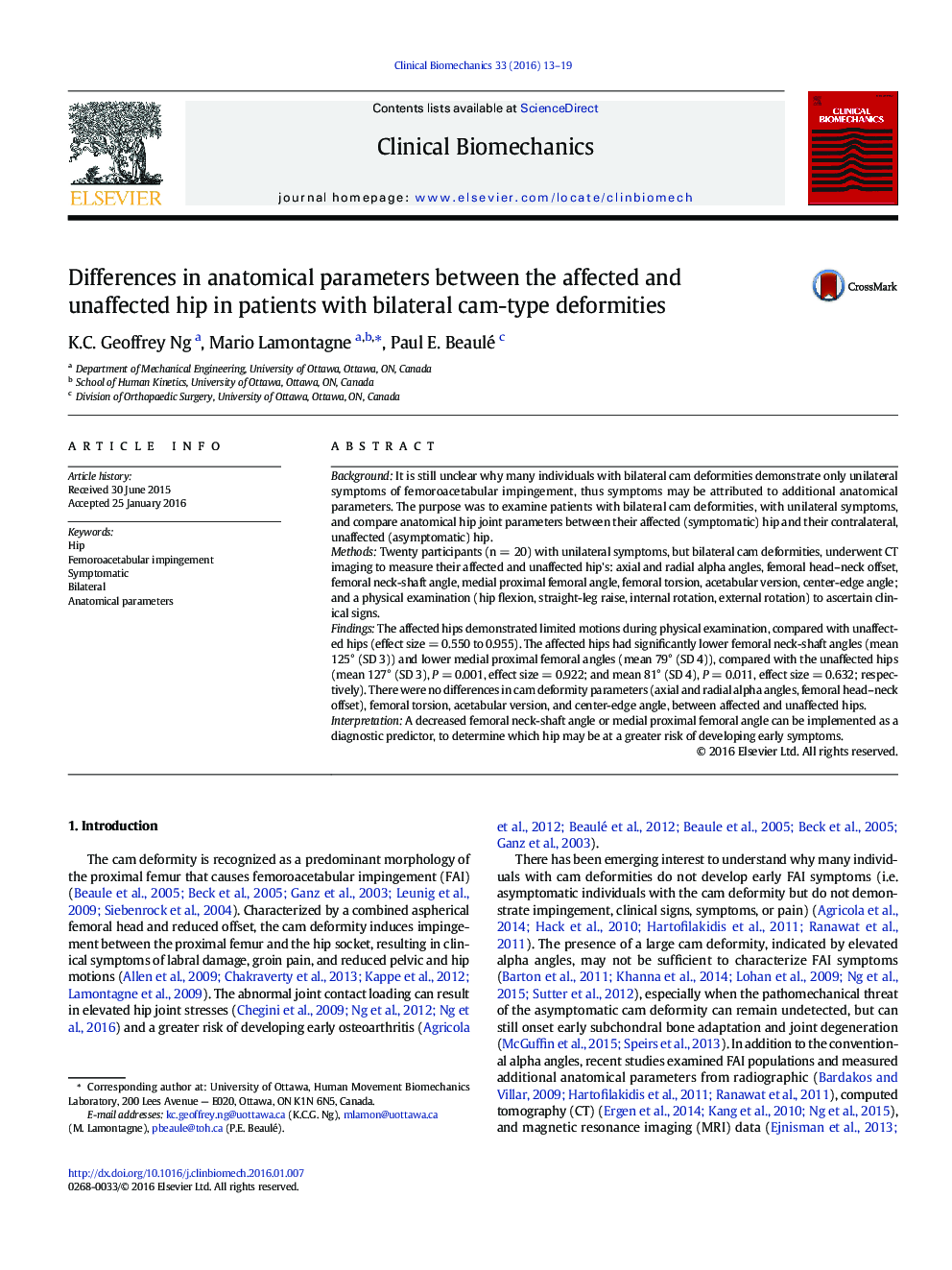| Article ID | Journal | Published Year | Pages | File Type |
|---|---|---|---|---|
| 4050126 | Clinical Biomechanics | 2016 | 7 Pages |
•Examined patients with bilateral cam-type deformities, having unilateral symptoms.•Measured multiple anatomical parameters of symptomatic and asymptomatic sides.•Performed physical examinations to confirm differences in clinical signs.•Symptomatic hips had lower femoral neck-shaft and medial proximal femoral angles.•Decreased femoral neck angles can help predict early clinical symptoms.
BackgroundIt is still unclear why many individuals with bilateral cam deformities demonstrate only unilateral symptoms of femoroacetabular impingement, thus symptoms may be attributed to additional anatomical parameters. The purpose was to examine patients with bilateral cam deformities, with unilateral symptoms, and compare anatomical hip joint parameters between their affected (symptomatic) hip and their contralateral, unaffected (asymptomatic) hip.MethodsTwenty participants (n = 20) with unilateral symptoms, but bilateral cam deformities, underwent CT imaging to measure their affected and unaffected hip's: axial and radial alpha angles, femoral head–neck offset, femoral neck-shaft angle, medial proximal femoral angle, femoral torsion, acetabular version, center-edge angle; and a physical examination (hip flexion, straight-leg raise, internal rotation, external rotation) to ascertain clinical signs.FindingsThe affected hips demonstrated limited motions during physical examination, compared with unaffected hips (effect size = 0.550 to 0.955). The affected hips had significantly lower femoral neck-shaft angles (mean 125° (SD 3)) and lower medial proximal femoral angles (mean 79° (SD 4)), compared with the unaffected hips (mean 127° (SD 3), P = 0.001, effect size = 0.922; and mean 81° (SD 4), P = 0.011, effect size = 0.632; respectively). There were no differences in cam deformity parameters (axial and radial alpha angles, femoral head–neck offset), femoral torsion, acetabular version, and center-edge angle, between affected and unaffected hips.InterpretationA decreased femoral neck-shaft angle or medial proximal femoral angle can be implemented as a diagnostic predictor, to determine which hip may be at a greater risk of developing early symptoms.
